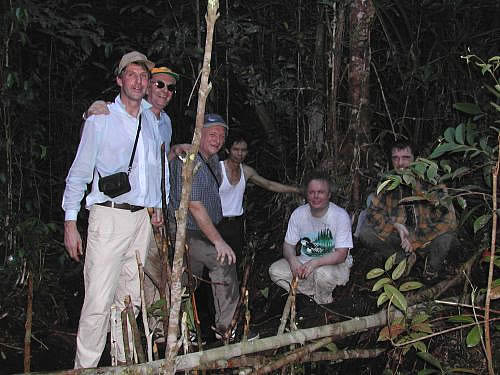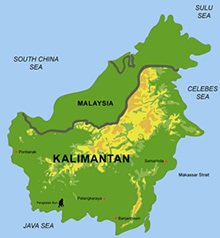projects

Our projects
Large areas of globally important tropical peatland in Southeast Asia are under threat from land clearance, degradation and fire jeopardising their natural functions as reservoirs of biodiversity, carbon stores and hydrological buffers. Local research capability will be strengthened enabling peatland managers to better understand and address the different, interrelated processes operating in tropical peatlands.
- Sambodja Lestari, BOS Foundation in ...
- LiDAR-Data and 30 RGB-Photos from Bukit ...
- RGB Photos from Block C and Sabangau catchment ...
- LiDAR survey 2011 in Central and East Kalimantan ...
- Three Ortho-Photo-Mosaiks taken with ...
- LiDAR and Ortho-Photo Survey in East- and Cenral ...
- LiDAR-Survey in Central Kalimantan for CKPP in ...
- EU - Project: RESTORPEAT-Project: Restoration of ...
- EU - Projekt: STRAPEAT-Seminar / Workshop on the ...
- EU Project - The STRAPEAT Project sponsored by ...
- EU Project: - Natural Resource Functions (Interim ...
- EU Project: - NATURAL RESOURCE FUNCTIONS, ...
- Mega Rice Project - The Benefits of Space-Based ...
- Mega Rice
gallery

image gallery
Find a large collection of images from many years of exploration by kalteng-consultants.
History Borneo - Kalimantan · Excursions to peatland 1996 · Mega Rice Project 1999 · 2004 · 2005 · 2006 · 2007 · 2008 · 2009 · 2010 · 2011 · 2012 · 2013 · 2014 · 2015 · 2016-March · 2016-August ·
projects
EU - Projekt: STRAPEAT-Seminar / Workshop on the Opportunities and Challenges for Wise Use of peatland in Central Kalimantan
Palangkaraya on 26 - 27 Nov. 2004
Land cover changes, carbon storages and Fires 2002 in Kalteng, Strapeat-Seminar / Workshop in Palangkaraya and Workshop in BPPT, Jakarta on 30.11.2004 Introduction PSF is among the earth's most endangered ecosystem with a huge carbon storage capacity, extremely fragile to disturbance (Sieffermann 1988 and Rieley et al. 1996).
Between 1999 and 2003 three Landsat images from Sampit and Palangkanbun area were compared using detailed multi-temporal analysis (see Fig. 1 and 2 and Tables 1 and 2). Ground verification tracks were done in Nov. 2003.
During the last 10 years big plantations of oil palm and rubber trees were planted on peatland. Oil palm on fragile peat soils have excellent fruit yields with careful water management. Establishment costs are high, as the peats require compaction prior to planting as well as drainage / irrigation. World demand for palm oil is forecast to increase from 20.2 million tonnes per annum to 40 million tonnes in 2020. If this demand is to be met, 300 000 ha of new estates will need to be planted each year (Sargeant, 2001). Initial fire set to clear residual wood debris, continues to smoulder and emits dense smoke from peat underground long after the surface fire has died (Page et al. 2002, Usup et al. 2004).
Indonesian law explicitly forbids the use of fire for land clearance. Haze and fire monitoring over Borneo and Sumatra using NOAA satellite images offers the Singapore National Environment Agency service for new fires on a daily basis: http://app.nea.gov.sg/cms/htdocs/category_sub.asp?cid=55 . Hot spots are counted in the images.
In 1996 the Indonesian Government commenced the “One Million Hectare Mega Rice Project” (MRP), linked to transmigration (Barber and Schweithelm 2000, Boehm et al. 2000, 2001). The 1.5 million hectares total area affected by this project was divided for operational purposes into five landscape units known as blocks A, B, C, D and E. Block D was opened before 1996. The division of block E into E, E2, E3 and E4 is caused by the rivers Kahayan, Mangkutup, Muru, Kapuas and Barito. The MRP is a major location of fire “hot spots”, especially in the dry season. Between July to November 2002, during a minimum ENSO five years after the big ENSO of 1997 strong fires damaged many regions around Palangka Raya (Boehm et al. 2003a, 2003b, 2003c). Detailed analysis was made for the different MRP blocks. Burned peat below the vegetation released large amounts of carbon (Page et al. 2000, 2002, Siegert et al. 2001). Pak Suwido Limin from University of Palangkaraya and director of CIMTROP writes on the 29. July 2002: “CENTRAL KALIMANTAN IS ON FIRE AGAIN! A PLEA FOR URGENT ASSISTANCE! A fire fighting team, ‘Tim Serbu Api’ (TSA) under my direction is working hard to suppress fires in block C of the former Mega Rice Project area, near to the Kalampangan Channel in Central Kalimantan Province of Indonesia.
We started on Friday 25th July 2002 and worked without rest or stopping, every day and night. So far we have successfully installed deep wells below this peat covered landscape in three locations and obtained water to wet the peat surface along a transect line 800-900 metres long to try to stop the fire from spreading to the nearby village and destroying crops, houses, forest and peat.…..The National, Provincial and Local Governments are powerless to do anything, only meeting and talking, while destruction takes place around them. All of the people in and around the Provincial capital of Palangka Raya are now suffering from the choking haze and smoke. The conditions are terrible and many children will become ill, some permanently. We desperately need help to extinguish these fires.”


